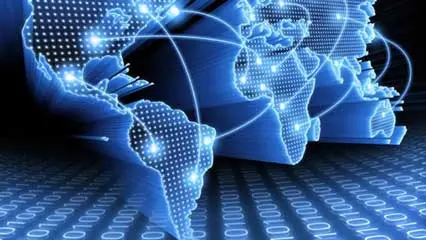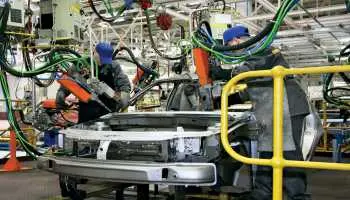
Digital Agriculture Market Growth, Demand, Share, Scope, Growth Strategy, Challenges, Key Players and Future Opportunities Till 2033: SPER Market Research
Category :
Agriculture
Published: Dec-2022
Author: SPER Analysis Team
Digital Agriculture Market Growth, Demand, Share, Scope, Growth Strategy, Challenges, Key Players and Future Opportunities Till 2033: SPER Market Research
Global Digital Agriculture Market is projected to be worth USD 55.40 billion by 2033 and is anticipated to surge at a CAGR of 10.76%.
The term "digital agriculture" describes the application of cutting-edge technology and digital tools to farming and agriculture. It entails integrating various technologies, such as sensors, drones, artificial intelligence, and data analytics, to enhance and maximise farming practises. Simply put, digital agriculture is the use of technology to assist farmers in cultivating crops and raising livestock in a more efficient and effective manner. For instance, farmers can monitor soil moisture, temperature, and nutrient levels using sensors in their fields. Farmers can then use this information to decide when to water their crops or apply fertiliser by having it sent to a computer or smartphone.
Global Digital Agriculture Market Driving Factors and Challenges
The expansion of the global digital agriculture market is being fuelled by a number of factors. First of all, there is a rising demand for food as a result of the world population growth. In order to ensure that there is enough food for everyone, digital agriculture aids farmers in producing food more effectively. Second, farmers now have easier access to and lower costs for digital tools thanks to technological advancements. As a result, more farmers can adopt digital agriculture techniques and take advantage of their benefits.
Thirdly, traditional farming practises have faced difficulties as a result of climate change. By assisting farmers to more effectively monitor and manage their resources, digital agriculture offers solutions to reduce the effects of climate change. For instance, farmers can conserve water and use it effectively even in areas at risk of drought by using sensors to measure soil moisture.
Furthermore, there are several obstacles facing the global digital agriculture market. The initial cost of implementing digital technologies is a major obstacle. The cost of these technologies can be high, and they also call for additional infrastructure and training expenditures. For small-scale farmers who might not have the financial means to adopt digital agriculture practises, this presents a challenge. Lack of adequate internet connectivity, particularly in rural areas, is another issue. For data collection and transmission, digital agriculture heavily relies on internet access. The smooth operation of digital tools and technologies is hampered by the limited or unreliable internet connectivity found in many rural areas.
Request For Free Sample Report @ https://www.sperresearch.com/report-store/digital-agriculture-market.aspx?sample=1
Impact of COVID-19 on Global Digital Agriculture Market
The global digital agriculture market has been significantly impacted by the COVID-19 pandemic. Global supply chains being disrupted is one of the main effects. The transportation of agricultural inputs and products has been disrupted as a result of the restrictions put in place to stop the virus' spread, such as lockdowns and travel restrictions, which have an impact on the entire agricultural ecosystem. The pandemic has also brought attention to the significance of food security, increasing demand for digital agriculture solutions. Digital agriculture emerged as a workable solution to lessen the impact of the pandemic on food production as traditional farming methods encountered difficulties. The demand for remote and contactless farming methods increased, hastening the adoption of digital tools and technologies.
Digital Agriculture Market Key Players:
The market study provides market data by competitive landscape, revenue analysis, market segments and detailed analysis of key market players such as; Accenture, Ag Gateway, AGCO Corporation, Agreena, Agri Webb, AKVA Group, BASF SE, Bayer Crop science AG, CISCO Systems Inc., CropX Inc., Deere & Company, DeLaval, Digital Globe, DJI, DTN, Epicor Software Corporation, Eurofins Scientific, Farmers Business Network, Farmers Edge Inc., Gamaya, Hexagon AB, IBM Corporation, Monsanto Company, Precision Hawk, Raven Industries, Small Robot Company, Syngenta AG, Taranis, Telus agriculture, Trimble Inc., Vodafone Group Plc, Zemdirbių Konsultacijos UAB.
For More Information about this Report @ https://www.sperresearch.com/report-store/digital-agriculture-market.aspx
Global Digital Agriculture Market Segmentation:
By Component: Based on the Component, Global Digital Agriculture Market is segmented as; Hardware {Automation and Control Systems (Control Systems, Displays, Drones/UAVs, Flow and Application Control Devices, Global Positioning Systems, Guidance and Steering Systems, Handheld Mobile Devices/ Handheld Computers, Harvesters & Forwarders, HVAC Systems, Irrigation Controllers, LED Grow Lights, Robotics Hardware, Variable Rate Controllers, Others), Sensing and Monitoring Device (Camera Systems, Climate Sensors, EC Sensors, pH and Dissolved Oxygen Sensors, RFID and Sensors for Precision Forestry, RFID tags & Readers for Livestock Monitoring, Sensors for Livestock Monitoring, Sensors for Smart Greenhouse, Soil Sensors, Temperature and Environmental Monitoring, Water Sensors Yield Monitor), Services (Assistant Professional Services, Connectivity Services, Maintenance and Support Services, Managed Services, System Integration and Consulting), Software (AI and Data Analytics, On-Cloud, On-Premises)}.
By Type: Based on the Type, Global Digital Agriculture Market is segmented as; Artificial Intelligence, Crop Monitoring, Precision Farming.
By Technology: Based on the Technology, Global Digital Agriculture Market is segmented as; Core Technologies (AL-ML, Automation, Drones, Robotics), Peripheral Technologies (Apps, Platforms).
By Operation: Based on the Operation, Global Digital Agriculture Market is segmented as; Farming and feeding (Precision Agriculture, Precision Animal Rearing and Feeding, Precision Aquaculture, Precision Forestry, Smart Greenhouse), Marketing and Demand Generation, Monitoring and Scouting.
By Deployment: Based on the Deployment, Global Digital Agriculture Market is segmented as; Cloud, On-Premise.
By Company Type: Based on the Company Type, Global Digital Agriculture Market is segmented as; Tier 1-55%, Tier 2-20%, Tier 3-25%.
By Designation: Based on the Designation, Global Digital Agriculture Market is segmented as; C-Level Executives-40%, Directors-35%, Others-25%.
By Application: Based on the Application, Global Digital Agriculture Market is segmented as; Crop Scouting, Farm Labor Management, Field Mapping Telematics, Inventory Management, Weather Tracking & Forecasting, Yield Monitoring, Others.
By Offering: Based on the Offering, Global Digital Agriculture Market is segmented as; Advisory services, Agri eCommerce, Digital Procurement, Financial services, Precision Agriculture and Farm Management, Quality Management and Traceability.
By Region: This report also provides the data for key regional segments of Asia-Pacific, Europe, Middle East and Africa, North America, Latin America.
This study also encompasses various drivers and restraining factors of this market for the forecast period. Various growth opportunities are also discussed in the report.
Would you like to view the sample pages?
Get Sample PagesExplore Related Reports
Domains Served
Our Global Clients
Our data-driven insights have influenced the strategy of 200+ reputed companies across the globe.




































